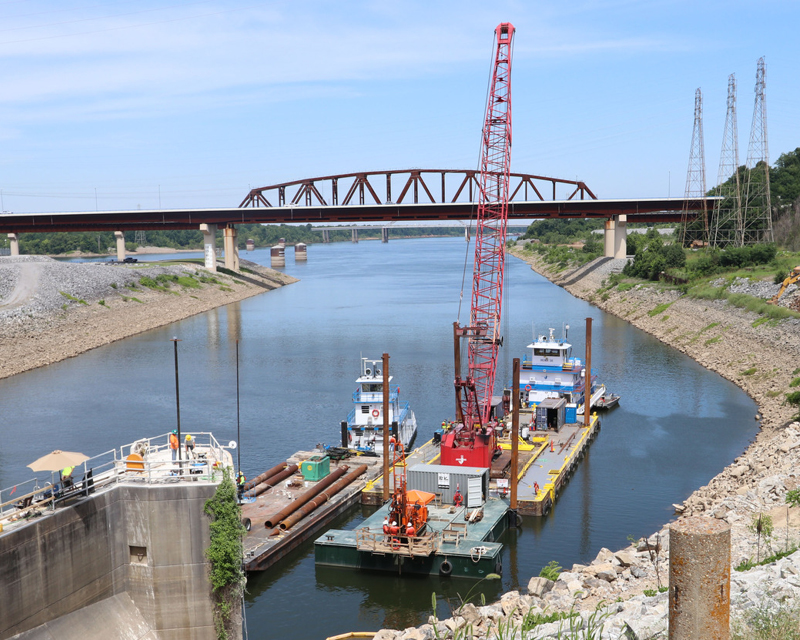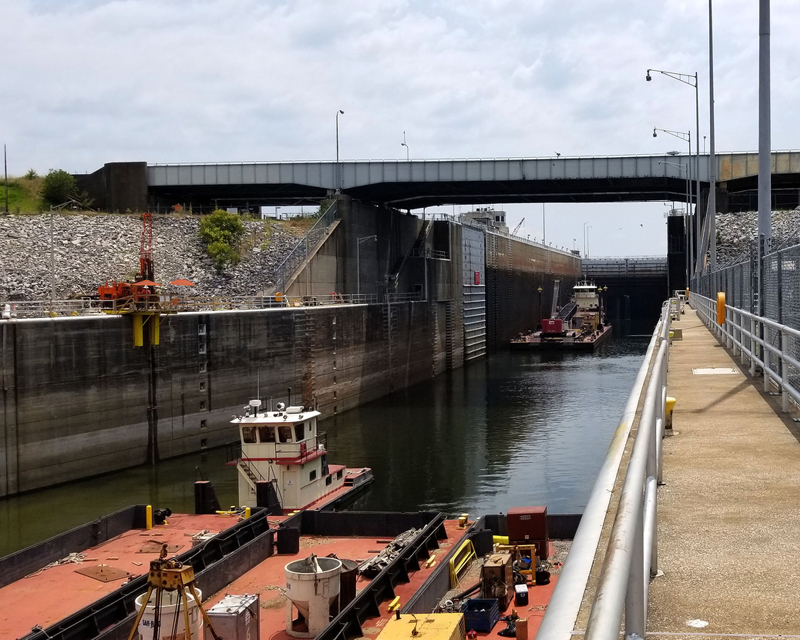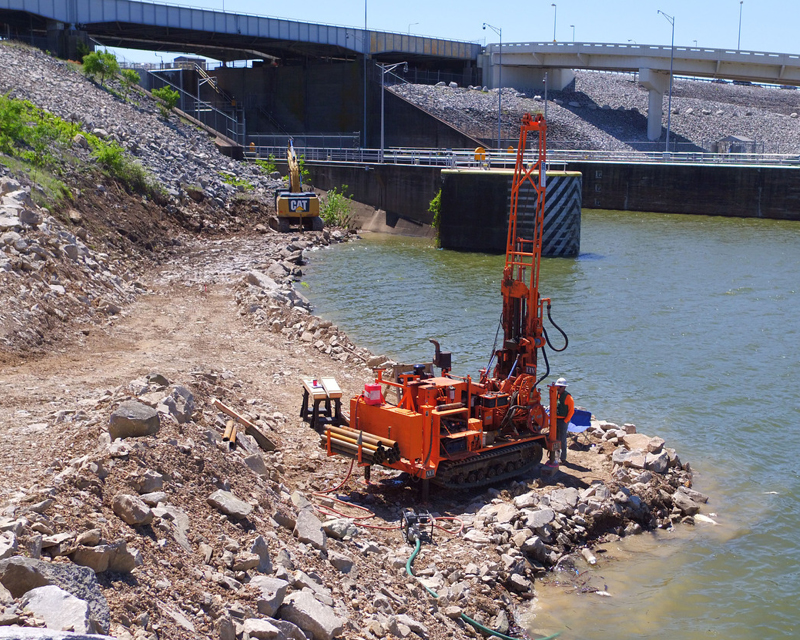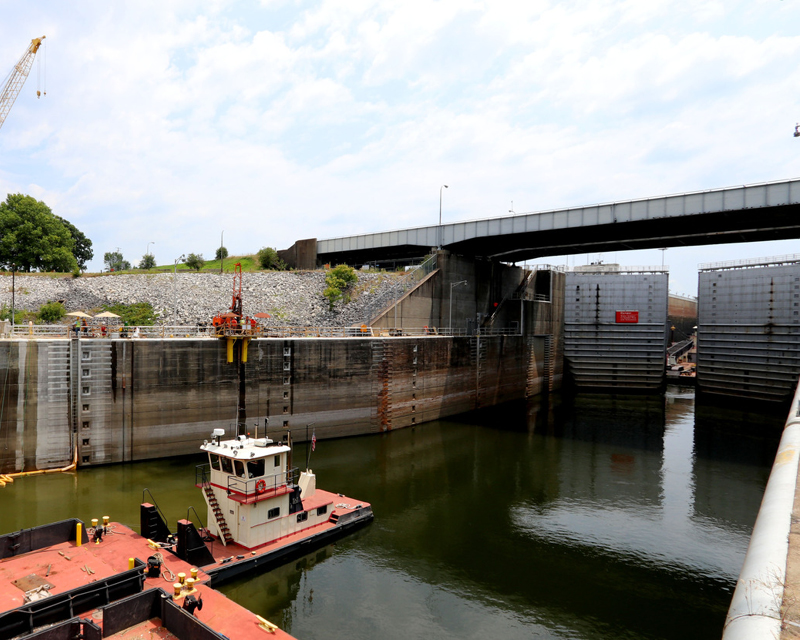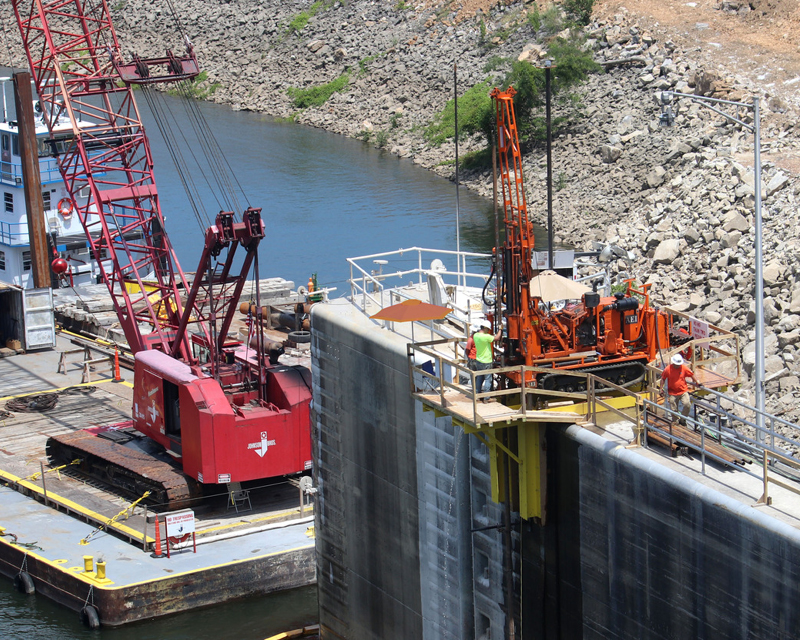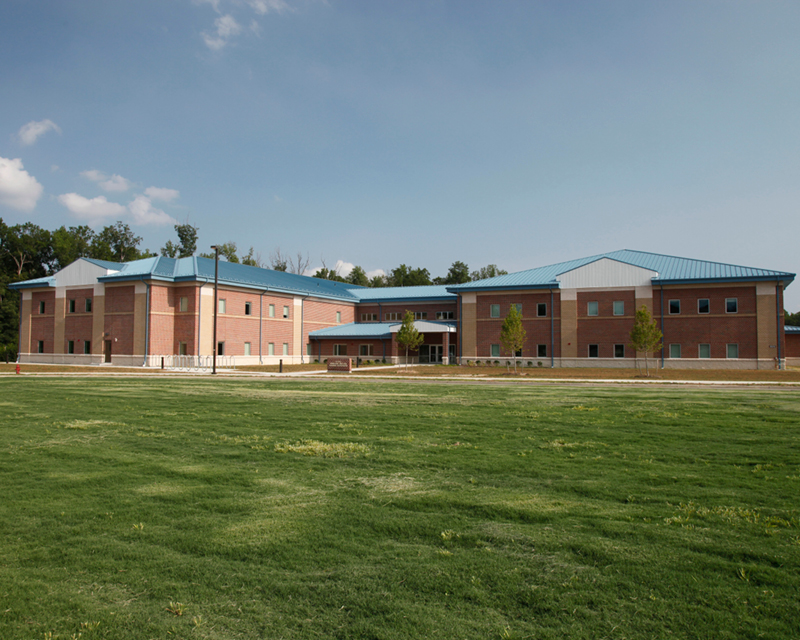Commercial tows transporting goods to and from a 20-state region pass through the Kentucky Lock on the Tennessee River or the Barkley Lock on the Cumberland River – two gateways in Grand Rivers, KY, connecting to more than 700 miles of navigable waters in the Tennessee River Basin. Due to challenging navigation downstream of the Barkley Lock, over 80% of commercial tows use the Kentucky Lock, with most exceeding 600 feet in length. This required a time-consuming double lockage to pass through the existing 600-foot lock, resulting in delays of four to seven hours – some of the longest in the inland waterway system. The Kentucky Lock Expansion Project alleviated these delays by constructing a new 1,200-foot lock, significantly improving efficiency and freight movement across the region.
STV performed the geotechnical investigation to support the lock expansion’s foundation design. This work included 19 borings utilizing HWT-sized casing and HWL-sized coring equipment, performed in three phases:
- Land-based drilling (8 borings)
- Floating platform drilling (8 borings) from a barge on the Tennessee River
- Aerial platform drilling (3 borings) from a structure affixed to the existing lock guide wall
In collaboration with Johnson Brothers Construction, STV helped install stabilizing collars along the lock’s vertical guide wall to secure the drilling casing for rock coring. Drilling conditions were complex, with water level fluctuations and wave action from passing barges. Additionally, STV identified and assessed karst voids in the limestone bedrock using Standard Penetration Tests (SPT) and pressure testing to evaluate water inflow. Each borehole was pressure grouted upon completion, utilizing a standalone grout pump, as directed by USACE Nashville District geologists.
$900M
project cost
110′ x 1,200′
lock dimensions
80%
commercial tows from region
